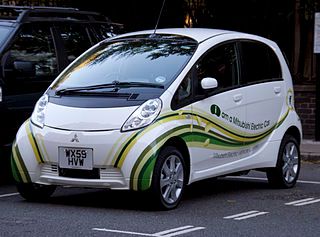The U.S. Has Aggressive Targets for Fuel Economy Improvements—But Are We on Track To Achieve Them?

Of course, these figures are subject to distortion, which can come from OEMs deliberately distorting the numbers, or from innocuous sources, e.g., that the real numbers actually are hard to nail down. An example of the former is that all OEMs have huge incentives to offer electric vehicles, but, paradoxically, not to sell too many. An example of the latter would be settling on an MPG equivalent for that very same EV, insofar as it depends enormously on how, where, and when it’s charged.

Craig,
EV sales have very little impact on average fleet economy. According to “insideEVs.com, there were ~11,500 plug-in vehicles sold in the U.S. during the month of May, 2015… only ~9100 of which were sold by dealers that also sell ICE vehicles, and only ~5700 of those are pure EV’s (the rest being PHEV’S).
The month of May, 2015 saw a total of ~1.635 million light vehicles sold… So the total sales of EV’s from dealers that also sell ICE vehicles comprise a total of ~0.3% of vehicle sales. The EPA falsely scores EV’s at absurd ratings of ~90-100 mpge, so if the average fleet economy in 2005 was ~20 mpg, and is now ~24 mpg… the additional sales of EV’s during that time would have accounted for ~0.22-0.23 mpg of that improvement. The rest had to come from more efficient ICE performance (focusing on the increased market share of HEV’s), and a general downsizing of purchases – more small SUV’s and medium sized cars, and less hulking huge SUV’s…
If you focus just on cars, the trend looks better, but ignoring the trucks and SUV’s tends to focus on the small problem while ignoring the very big problem.
Thanks. Very illuminating.
What Glenn is saying is true for now, but with EVs possibly on a fast ramp to a much higher proportion of the new vehicle market, the EV factor is likely to be significantly more important in 2020.
Gary,
I’ll grant you that worldwide the EV market is still growing strong… but in the U.S, the first 5 months of 2015 have seen 0.1% more EV sales than the first 5 months of 2014.
This is a winnowing period for EV’s, because the market absolutely requires high oil prices in order to be competitive. (Actual price of oil in most cases needs to be $7-$9/gallon before the purchase makes economic sense).
With the depressed oil prices, you have far slower growth for EV’s, and every single EV manufacturer is losing money on their EV product line.
The good news for EV manufacturers is that we’re facing a future spike in prices. But the time frame on that is tricky to gage. The biggest factor is Iran, and we won’t know how those negotiations turn out for a while.
Even if EV sales double every year, they will still not add up to a significant factor by 2020; even using the entirely fraudulent ratings offered by the EPA.